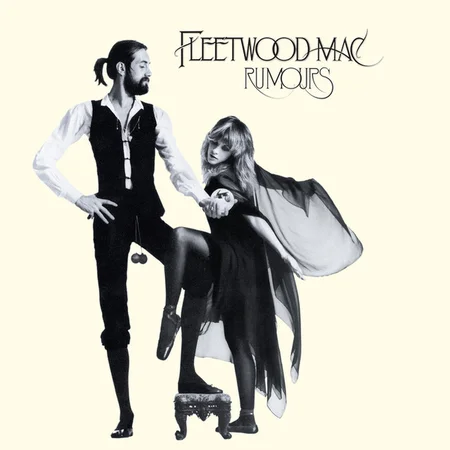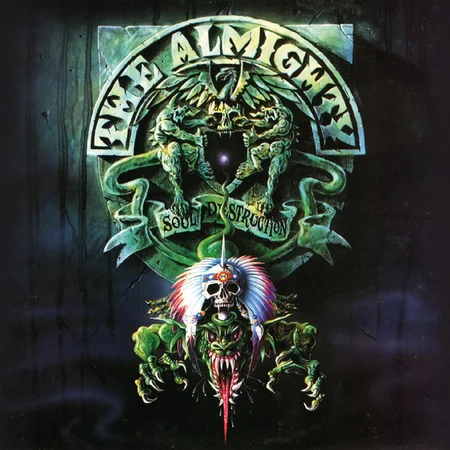
Introduction
Released in 1970, Paranoid by Black Sabbath remains a cornerstone in the world of heavy metal. This iconic album not only solidified the band’s place in music history but also paved the way for countless artists and genres that followed. Its groundbreaking sound and powerful themes have left an indelible mark on the music industry. In this article, we’ll delve into the making of “Paranoid,” its cultural impact, and why it continues to resonate with audiences today.
We’ll explore the album’s genesis, the recording process, and its commercial success. Additionally, we’ll analyse each track, discuss the album’s themes, and examine its influence on both contemporary and future musicians. This comprehensive guide aims to provide a deep understanding of “Paranoid” and its enduring significance.
| Attribute | Details |
|---|---|
| Release Date | 18 September 1970 (UK), 7 January 1971 (US) |
| Album Title | Paranoid |
| Genre | Heavy Metal |
| Total Runtime | 41:51 |
| Number of Tracks | 8 |
| Record Label | Vertigo |
| Recording Studio | Regent Sound and Island Studios, London |
| Producer(s) | Rodger Bain |
Black Sabbath’s “Paranoid” achieved critical acclaim, topping the UK Albums Chart and reaching No. 12 on the US Billboard 200. Geezer Butler, the band’s bassist and primary lyricist, once remarked, “We never set out to be a heavy metal band. We just wanted to be a good band.” This sentiment reflects the band’s groundbreaking approach, which continues to influence countless musicians and genres.
The Genesis of “Paranoid”
In the late 1960s, the world was undergoing significant cultural shifts. The peace and love era of the 1960s was giving way to a darker, more introspective mood. It was within this environment that Black Sabbath emerged, offering a sound that was both heavy and thought-provoking. Their self-titled debut album, released earlier in 1970, had already begun to make waves, setting the stage for “Paranoid.”
Black Sabbath’s journey to “Paranoid” was marked by rapid evolution. Their debut album laid the foundation, introducing audiences to their unique blend of heavy riffs and dark themes. The band members—Ozzy Osbourne, Tony Iommi, Geezer Butler, and Bill Ward—each brought their distinct talents to the table, shaping the band’s sound and direction.
Financially, the band faced challenges typical of emerging artists. The recording costs for “Paranoid” were financed by their record label, Vertigo, with a modest budget. Despite these constraints, the band produced an album that would go on to define a genre. The album’s title, originally intended to be “War Pigs,” was changed due to concerns over potential backlash related to the Vietnam War. The cover art, designed by Keith McMillan, featured a model dressed as a pig with a sword, a concept that remained despite the title change.
| Band Member | Instrument/Role |
|---|---|
| Ozzy Osbourne | Lead Vocals |
| Tony Iommi | Guitar, Flute on “Planet Caravan” |
| Geezer Butler | Bass Guitar |
| Bill Ward | Drums, Congas on “Planet Caravan” |
Recording Process
The recording sessions for “Paranoid” took place from 16 to 18 June 1970 at Regent Sound and Island Studios in London. The band worked under the guidance of producer Rodger Bain, who had previously collaborated with them on their debut album. Bain’s experience and understanding of the band’s sound were instrumental in capturing the raw energy and intensity that defined “Paranoid.”
The studio environment played a crucial role in shaping the album’s sound. Although specific details about the hardware used are not explicitly documented, it’s likely that the band utilised standard equipment of the era, such as Neumann microphones and a Neve mixing desk. These tools helped to capture the heavy, distorted guitar tones and powerful drumming that became hallmarks of the album.
During the recording process, the band faced several challenges. One notable anecdote involves the creation of the title track, “Paranoid.” Originally conceived as a filler song, it was written and recorded in just a few hours. Despite its rushed creation, “Paranoid” became one of the band’s most enduring hits. The recording sessions were characterised by a sense of urgency, as the band was eager to capture their live sound and energy in the studio.
| Producer | Artist | Album | Year |
|---|---|---|---|
| Rodger Bain | Black Sabbath | Black Sabbath | 1970 |
| Rodger Bain | Black Sabbath | Master of Reality | 1971 |
Commercial Performance and Reception
Upon its release, “Paranoid” quickly ascended the charts, becoming a commercial success. In the UK, it topped the Albums Chart, while in the US, it reached No. 12 on the Billboard 200. This success was a testament to the band’s growing popularity and the album’s widespread appeal. The title track “Paranoid” also performed well, peaking at No. 4 on the UK Singles Chart.
The album’s impact extended beyond chart success. It received numerous accolades and is often cited as one of the greatest heavy metal albums of all time. Rolling Stone ranked it No. 1 on their list of “100 Greatest Metal Albums of All Time.” Despite initial mixed reviews, “Paranoid” has since been re-evaluated and celebrated for its innovative sound and enduring influence.
Other notable albums released in 1970 include Led Zeppelin III by Led Zeppelin, In Rock by Deep Purple, and Benefit by Jethro Tull. These albums, along with “Paranoid,” helped to shape the musical landscape of the 1970s, introducing new sounds and pushing the boundaries of rock and metal.
| Studio Album | Year | Sales Data |
|---|---|---|
| Paranoid | 1970 | 9.9 million |
| Black Sabbath | 1970 | 4.9 million |
| Master of Reality | 1971 | 4.8 million |
| Vol. 4 | 1972 | 4.1 million |
| Sabbath Bloody Sabbath | 1973 | 4 million |
Track Analysis
The singles released from “Paranoid” include the title track “Paranoid” and “Iron Man.” Both tracks achieved significant commercial success and remain staples in Black Sabbath’s discography. Their enduring popularity is a testament to the band’s songwriting prowess and the album’s impact on the heavy metal genre.
The following table provides an overview of the songs on the album, including their lengths and writing credits:
| Track Name | Length | Writing Credit |
|---|---|---|
| War Pigs | 7:55 | Butler, Iommi, Osbourne, Ward |
| Paranoid* | 2:50 | Butler, Iommi, Osbourne, Ward |
| Planet Caravan | 4:30 | Butler, Iommi, Osbourne, Ward |
| Iron Man* | 5:56 | Butler, Iommi, Osbourne, Ward |
| Electric Funeral | 4:50 | Butler, Iommi, Osbourne, Ward |
| Hand of Doom | 7:10 | Butler, Iommi, Osbourne, Ward |
| Rat Salad | 2:30 | Butler, Iommi, Osbourne, Ward |
| Fairies Wear Boots | 6:15 | Butler, Iommi, Osbourne, Ward |
Note: Tracks marked with * were released as singles.
Song Meaning and Lyrics
The lyrics and themes of “Paranoid” delve into various aspects of human experience, reflecting the band’s introspective and often dark worldview. The singles “Paranoid,” “Iron Man,” “War Pigs,” and “Fairies Wear Boots” each offer unique insights into the band’s creative process and thematic exploration.
“Paranoid” addresses themes of depression and paranoia, drawing from Geezer Butler’s personal struggles. The song’s lyrics express a sense of mental distress and dissatisfaction with life. “Iron Man” tells the story of a man who travels to the future, witnesses an apocalypse, and becomes an iron figure upon returning to his own time. The narrative explores themes of isolation and revenge.
“War Pigs” critiques warmongering politicians and the exploitation of the poor in warfare. The song’s powerful lyrics and dynamic musical shifts have made it an anthem of anti-establishment sentiment. “Fairies Wear Boots,” inspired by a confrontation with Skinheads, features whimsical and surreal imagery, reflecting the cultural backdrop of the late 1960s and early 1970s.
Touring and Promotion of Paranoid
The promotional strategies for “Paranoid” included the release of singles, music videos, and extensive touring. The band embarked on the Paranoid Tour, performing 121 shows across Europe and the United States. This rigorous schedule helped to solidify their reputation as a formidable live act and contributed to the album’s commercial success.
During the 1970 tour, Black Sabbath performed alongside notable artists such as Led Zeppelin and Deep Purple. The tour was marked by memorable performances, including a legendary show at L’Olympia in Paris on 20 December 1970. These live performances showcased the band’s raw energy and musical prowess, further cementing their status as pioneers of heavy metal.
Influences and Legacy
“Paranoid” was shaped by various musical influences, including blues, jazz, and rock. The band’s innovative approach to these genres helped to create a new sound that would become synonymous with heavy metal. The album’s influence can be seen in the work of artists such as Metallica, Iron Maiden, and Slayer, who have all cited Black Sabbath as a major inspiration.
The following table highlights some of the key influences on “Paranoid” and the artists who were influenced by the album:
| Influences on “Paranoid” | Artists Influenced by “Paranoid” |
|---|---|
| Blues | Metallica |
| Jazz | Iron Maiden |
| Rock | Slayer |
The year 1970 was a pivotal time in music and culture. The Beatles released “Let It Be,” marking the end of an era. Meanwhile, the Vietnam War continued to dominate headlines, influencing the themes of many artists, including Black Sabbath. This cultural backdrop provided fertile ground for the emergence of new musical styles and the evolution of rock and metal.
Five Things About Paranoid
Here are five interesting facts about “Paranoid” that highlight its significance and legacy:
| Fact | Details |
|---|---|
| Title Track Creation | “Paranoid” was written and recorded in just a few hours as a filler track. |
| Album Title Change | Originally titled “War Pigs,” the album’s name was changed to “Paranoid” due to concerns over backlash. |
| Chart Success | “Paranoid” topped the UK Albums Chart and reached No. 12 on the US Billboard 200. |
| Influential Sound | The album’s heavy riffs and dark themes helped to define the heavy metal genre. |
| Cultural Impact | “Paranoid” continues to influence musicians and genres, solidifying Black Sabbath’s legacy. |
Media and Television Usage
Black Sabbath’s “Paranoid” has been featured in numerous films and television shows, showcasing its enduring appeal and cultural significance. The following table highlights some of the notable media appearances of songs from the album:
| Song Title | Media | Year |
|---|---|---|
| Paranoid | Dogtown and Z-Boys | 2001 |
| Paranoid | Dark Shadows | 2012 |
| Paranoid | Almost Famous | 2000 |
| Paranoid | The Angry Birds Movie | 2016 |
| Paranoid | Suicide Squad | 2016 |
Critical Reviews and Retrospectives
“Paranoid” has been the subject of numerous critical reviews and retrospectives, reflecting its lasting impact and significance. The following table summarises some of the notable reviews and their key insights:
| Publication | Review Score | Notable Quotes |
|---|---|---|
| Rolling Stone | 5/5 | “A groundbreaking album that redefined heavy metal.” |
| NME | 4.5/5 | “Paranoid captures the essence of a band at the peak of their powers.” |
| Pitchfork | 9/10 | “A timeless classic that continues to influence generations.” |
After Paranoid
Following the release of “Paranoid,” Black Sabbath continued to evolve and innovate. Their subsequent albums, such as “Master of Reality” and “Vol. 4,” further cemented their status as pioneers of heavy metal. However, the band faced challenges, including lineup changes and internal conflicts, which impacted their later works.
As of 2025, Black Sabbath remains a revered name in the music industry. Although the band officially disbanded in 2017, the members have continued to pursue individual projects. Ozzy Osbourne and Tony Iommi, in particular, have maintained active solo careers, contributing to the band’s enduring legacy.
Conclusion
In conclusion, “Paranoid” by Black Sabbath is a seminal album that has left a lasting impact on music and culture. Its innovative sound, powerful themes, and enduring influence continue to resonate with audiences today. As we reflect on its legacy, we are reminded of the band’s groundbreaking contributions to the world of heavy metal.
Further Reading
For more insights into the world of Black Sabbath and heavy metal, explore our related articles and podcasts:
Let us know in the comments what your thoughts are on Paranoid by Black Sabbath. Did we miss anything? Share your experiences and join the conversation!





